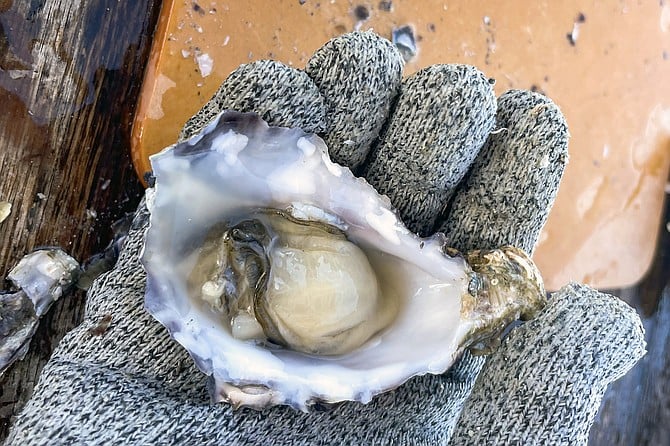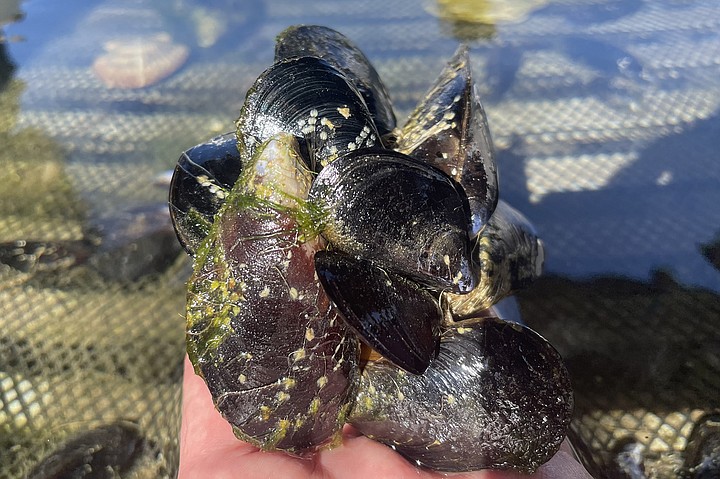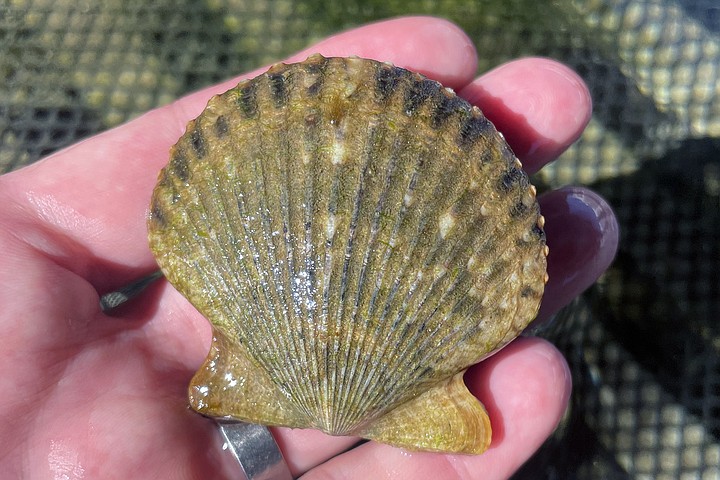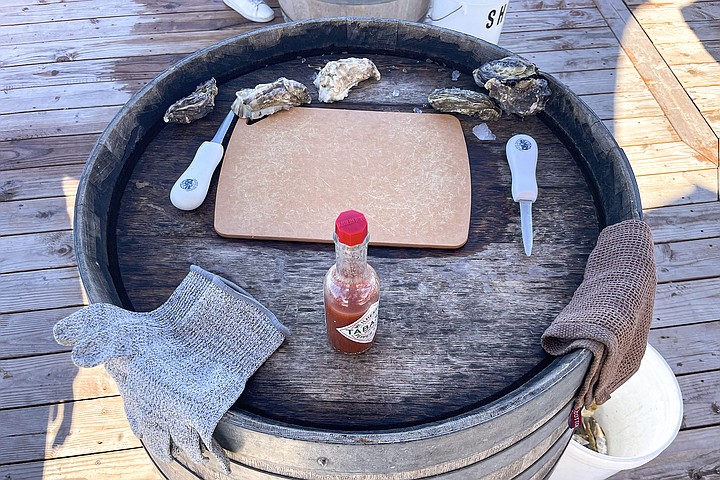 Facebook
Facebook
 X
X
 Instagram
Instagram
 TikTok
TikTok
 Youtube
Youtube

In the parking lot, it takes me a moment to realize what’s missing. I’m standing beside the old power plant in Carlsbad, only I don’t recognize it at first, because the stack is gone. The defunct plant is being dismantled, and though I can’t exactly be sentimental toward a smokestack, it is disorienting to be without a landmark associated with so many fun Tamarack surf sessions.
Today, I’m parking here to shuck oysters. Which may seem like a non sequitur but has everything to do with that plant being closed.

See, roughly since the plant went up in 1954, Carlsbad Aquafarm has been raising shellfish in its shadow. However, due to security concerns, the public wasn’t allowed to visit, so the aquafarm quietly harvested bivalves destined for restaurant menus. Last spring, following the closure of the plant, the aquafarm began opening its lagoon property to tours, and now all of its shellfish are sold directly to consumers.
That includes online pick-up orders, but plenty of the oysters in question are eaten on site, by tour participants. The hour-long tours begin at 10 am, noon, and 2 pm daily, and weekends in particular must be reserved weeks ahead of time. For $30, guests get a tour of the operation, a quick shucking tutorial, and six, fresh-from-the-water oysters to eat.

The tour itself includes a stop at a touching pool, where guest may lay hands on oysters of various life stages. These range from baby oysters in tiny shells the size of a nickel, to five-year-old breeders, often six- or seven-inches wide. The aquafarm also raises mussels, which grow in clusters on a length of rope, and the touch pool includes examples of a new cultivar in development: scallops.
Much of this will be surprising to those of us who associate West Coast oyster farming with the much cooler climes of Washington and British Columbia. However, Carlsbad Aquafarm has established such ideal conditions over the decades, that its oysters reach three-inch harvest size after only eleven months — many farms require two years and longer.

Oysters and other shellfish are filter feeders, and the original aquafarm was established by an SDSU project to clean up the Agua Hedionda Lagoon (a name meaning "fetid water"). These days, the farm has a somewhat symbiotic relationship with the Carlsbad Desalination Plant, across the now clean and biodiverse lagoon. Water pulled into the desal plant has been pre-filtered by the oysters and mussels, while the desal intake ensures greater flow of ocean water into the lagoon, which in turn keeps the bivalves well fed.
I admit to being dubious, both regarding the quality of shellfish and my own shucking ability. But once we got down to the business of separating the oysters from their shells, I found the meat to be smooth and impeccably ocean clean. Though not as briny as, say, Blue Point oysters from the east coast, these are fantastic at $20 per dozen. The $8 per pound mussels I took home yielded an excellent and budget-friendly seafood pasta.

Both oysters and mussels are currently available to those not taking the tour through online preorder. Orders will be ready for pick-up in two hours, at which point the shellfish will have been cleaned and out of the water for only ten minutes. You can’t beat that in Southern California.


In the parking lot, it takes me a moment to realize what’s missing. I’m standing beside the old power plant in Carlsbad, only I don’t recognize it at first, because the stack is gone. The defunct plant is being dismantled, and though I can’t exactly be sentimental toward a smokestack, it is disorienting to be without a landmark associated with so many fun Tamarack surf sessions.
Today, I’m parking here to shuck oysters. Which may seem like a non sequitur but has everything to do with that plant being closed.

See, roughly since the plant went up in 1954, Carlsbad Aquafarm has been raising shellfish in its shadow. However, due to security concerns, the public wasn’t allowed to visit, so the aquafarm quietly harvested bivalves destined for restaurant menus. Last spring, following the closure of the plant, the aquafarm began opening its lagoon property to tours, and now all of its shellfish are sold directly to consumers.
That includes online pick-up orders, but plenty of the oysters in question are eaten on site, by tour participants. The hour-long tours begin at 10 am, noon, and 2 pm daily, and weekends in particular must be reserved weeks ahead of time. For $30, guests get a tour of the operation, a quick shucking tutorial, and six, fresh-from-the-water oysters to eat.

The tour itself includes a stop at a touching pool, where guest may lay hands on oysters of various life stages. These range from baby oysters in tiny shells the size of a nickel, to five-year-old breeders, often six- or seven-inches wide. The aquafarm also raises mussels, which grow in clusters on a length of rope, and the touch pool includes examples of a new cultivar in development: scallops.
Much of this will be surprising to those of us who associate West Coast oyster farming with the much cooler climes of Washington and British Columbia. However, Carlsbad Aquafarm has established such ideal conditions over the decades, that its oysters reach three-inch harvest size after only eleven months — many farms require two years and longer.

Oysters and other shellfish are filter feeders, and the original aquafarm was established by an SDSU project to clean up the Agua Hedionda Lagoon (a name meaning "fetid water"). These days, the farm has a somewhat symbiotic relationship with the Carlsbad Desalination Plant, across the now clean and biodiverse lagoon. Water pulled into the desal plant has been pre-filtered by the oysters and mussels, while the desal intake ensures greater flow of ocean water into the lagoon, which in turn keeps the bivalves well fed.
I admit to being dubious, both regarding the quality of shellfish and my own shucking ability. But once we got down to the business of separating the oysters from their shells, I found the meat to be smooth and impeccably ocean clean. Though not as briny as, say, Blue Point oysters from the east coast, these are fantastic at $20 per dozen. The $8 per pound mussels I took home yielded an excellent and budget-friendly seafood pasta.

Both oysters and mussels are currently available to those not taking the tour through online preorder. Orders will be ready for pick-up in two hours, at which point the shellfish will have been cleaned and out of the water for only ten minutes. You can’t beat that in Southern California.
Comments